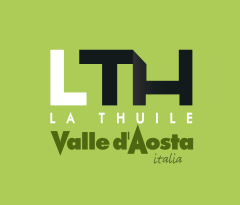SkiAlp from La Thuile
SkiAlp from La Thuile
11,3km
Distance+600m
Positive Elevation-924m
Negative ElevationUphill distance: 3.6 km; elevation gain with sealskins: +380 m.
The SkiAlp trail includes the use of ski lifts on some portions of the trail.
The SkiAlp trail includes the use of ski lifts on some portions of the trail.
Embed this item to access it offline
A beautiful international track dedicated to ski mountaineering that combines sporting activity with the discovery of places rich in natural values, landscapes, panoramic viewpoints and points of interest linked to history and tradition.
Skis and skins then become an incredible way to explore this area straddling Italy and France, in a succession of ascents and descents in fresh snow, enveloped in the perfection of nature and filled with beauty.
Skis and skins then become an incredible way to explore this area straddling Italy and France, in a succession of ascents and descents in fresh snow, enveloped in the perfection of nature and filled with beauty.
Description
From Les Suches (2176 m) starts the Italian track, which, following a beaten and safe track for about 4 kilometres, with a difference in altitude of 282 metres, reaches Colle del Belvedere (2558 m). From here, it is possible to continue towards France by following the Carabiniers piste that leads to the start of the Chardonnay chairlift. Taking this lift, you reach Col de la Traversette, from where you can descend to La Rosière.
Departure : La Thuile
Arrival : La Rosière
6 points of interest

Panorama
The Rutor
The Rutor glacier, with its 8.4 km2 surface area (2005 survey, Fondazione Montagna Sicura) is the third largest in Valle d'Aosta after Miage and Lys.
Its presence testifies to the massive presence in the Pleistocene of extensive glacial areas.
The name seems to derive from the Franco-Provençal term combining Ru (stream, torrent) and tor (twisted, crooked) to indicate the tormented course of the water flowing down from it.
The glacier forms a wide calotte that descends from Testa del Rutor (3,486 m) on the watershed ridge with Valsavarenche to an altitude of 2,500 m. The glacial front is articulated in several lobes, stretches for about 3 km and is surrounded almost uninterruptedly by more recent frontal moraines. The melt waters feed various newly formed lake basins whose waters give varying shades depending on the percentage of silt in suspension, which affects the refraction of light on the surface of the water.
Today, the melting of glaciers is a well-known, serious and worrying phenomenon, but the dynamics of the Rutor glacier between the 13th and 19th centuries already brought fluctuations in ice mass and recurrent, sudden and disastrous floods, well documented, due to the emptying of the meltwater lakes by the glacial route.
These floods, which were so significant that they reached the valley floor as far as Aosta, required the intervention of the Conseil des Commis, the highest administrative body in Valle d'Aosta, in 1595, which contacted an expert to find a solution and drain the waters safely. The cost of the work cooled intentions and nothing came of it...
Since the middle of the 19th century (end of the Little Ice Age), the glacier has been in retreat with retreat of the front. This phenomenon has accelerated in recent decades and is such that the disappearance of the entire glacier can be expected in a relatively short time.
Its presence testifies to the massive presence in the Pleistocene of extensive glacial areas.
The name seems to derive from the Franco-Provençal term combining Ru (stream, torrent) and tor (twisted, crooked) to indicate the tormented course of the water flowing down from it.
The glacier forms a wide calotte that descends from Testa del Rutor (3,486 m) on the watershed ridge with Valsavarenche to an altitude of 2,500 m. The glacial front is articulated in several lobes, stretches for about 3 km and is surrounded almost uninterruptedly by more recent frontal moraines. The melt waters feed various newly formed lake basins whose waters give varying shades depending on the percentage of silt in suspension, which affects the refraction of light on the surface of the water.
Today, the melting of glaciers is a well-known, serious and worrying phenomenon, but the dynamics of the Rutor glacier between the 13th and 19th centuries already brought fluctuations in ice mass and recurrent, sudden and disastrous floods, well documented, due to the emptying of the meltwater lakes by the glacial route.
These floods, which were so significant that they reached the valley floor as far as Aosta, required the intervention of the Conseil des Commis, the highest administrative body in Valle d'Aosta, in 1595, which contacted an expert to find a solution and drain the waters safely. The cost of the work cooled intentions and nothing came of it...
Since the middle of the 19th century (end of the Little Ice Age), the glacier has been in retreat with retreat of the front. This phenomenon has accelerated in recent decades and is such that the disappearance of the entire glacier can be expected in a relatively short time.

Small patrimony
Terres Noires
The name Terres Noires immediately refers to the dark colour of the rocky outcrops found in this area, linked to the presence of coal.
Geologically speaking, we are in a broad anthracite belt that starts in the Maurienne in Savoie and extends into the Aosta Valley via the Petit St Bernard and on into Switzerland. Anthracite is a fossil coal with a high carbon content derived from the transformation of ancient plant deposits that became trapped during sedimentation on the seabed. In 1749, on the orders of King Charles Emmanuel III, the inspector of mines Nicolas de Robilant also made inspections in this area, describing vast coal outcrops used as fuel for metalworking, lime kilns and domestic heating.
Terres Noires is also remembered for a bloody episode that occurred at the end of the Second World War, in August 1944.
German troops retreating from the Rhone valleys after the Allied landings and the progressive liberation of the occupied territories raided along the way and took a group of 28 Savoyard civilian hostages to protect themselves from the partisan guerrillas.
Shortly after the Little St. Bernard Pass, the prisoners were shot and buried in two mass graves. Their bodies were only found in the summer of 1945 when the snow melted. On 28 July 1945, a solemn funeral was held in Moûtiers in the presence of a large crowd. A monument commemorates this episode.
Geologically speaking, we are in a broad anthracite belt that starts in the Maurienne in Savoie and extends into the Aosta Valley via the Petit St Bernard and on into Switzerland. Anthracite is a fossil coal with a high carbon content derived from the transformation of ancient plant deposits that became trapped during sedimentation on the seabed. In 1749, on the orders of King Charles Emmanuel III, the inspector of mines Nicolas de Robilant also made inspections in this area, describing vast coal outcrops used as fuel for metalworking, lime kilns and domestic heating.
Terres Noires is also remembered for a bloody episode that occurred at the end of the Second World War, in August 1944.
German troops retreating from the Rhone valleys after the Allied landings and the progressive liberation of the occupied territories raided along the way and took a group of 28 Savoyard civilian hostages to protect themselves from the partisan guerrillas.
Shortly after the Little St. Bernard Pass, the prisoners were shot and buried in two mass graves. Their bodies were only found in the summer of 1945 when the snow melted. On 28 July 1945, a solemn funeral was held in Moûtiers in the presence of a large crowd. A monument commemorates this episode.

Flora
Altitudinal Plans
From a privileged vantage point encompassing a wide panorama, it is possible to admire how the mountain landscape changes its appearance gradually as one ascends in altitude.
Altitude first of all influences the decrease in temperature, which in turn influences the local climate, causing a diversification of the vegetation according to a series of characteristic overlapping belts called altitudinal planes. Each one presents itself to the eye in a peculiar way and hosts specific plant species.
From the bottom of the valley, where the towns and the most important communication routes are concentrated, one ascends to the mountain level (up to about 1200 m.a.s.l.) and to the sub-alpine level (up to about 2000 m.a.s.l.) and one can clearly see that the composition of the forest changes: the broadleaf trees at the bottom are replaced by conifers higher up and these, as one continues to ascend, gradually give way to bushes with trees that are gradually more sparse and isolated, until they leave room only for alpine grasslands and rocks.
The alpine plateau ranges from about 2000 to about 3000 m.a.s.l., and above this altitude, there are snowfields and glaciers with bare debris or rocky areas. Here, the vegetation has a discontinuous, almost exclusively herbaceous cover, which above 3600 metres is reduced to mosses and lichens.
Nature is often overlaid by human intervention, which introduces new variables and even more varied and articulated landscape forms. Man, for example, has always modified the development of the forest to create space for grazing and agriculture, as well as favouring certain species over others. This is the case of the larch, a robust species with valuable timber and a light crown that does not hinder the growth of forage grass.
Altitude first of all influences the decrease in temperature, which in turn influences the local climate, causing a diversification of the vegetation according to a series of characteristic overlapping belts called altitudinal planes. Each one presents itself to the eye in a peculiar way and hosts specific plant species.
From the bottom of the valley, where the towns and the most important communication routes are concentrated, one ascends to the mountain level (up to about 1200 m.a.s.l.) and to the sub-alpine level (up to about 2000 m.a.s.l.) and one can clearly see that the composition of the forest changes: the broadleaf trees at the bottom are replaced by conifers higher up and these, as one continues to ascend, gradually give way to bushes with trees that are gradually more sparse and isolated, until they leave room only for alpine grasslands and rocks.
The alpine plateau ranges from about 2000 to about 3000 m.a.s.l., and above this altitude, there are snowfields and glaciers with bare debris or rocky areas. Here, the vegetation has a discontinuous, almost exclusively herbaceous cover, which above 3600 metres is reduced to mosses and lichens.
Nature is often overlaid by human intervention, which introduces new variables and even more varied and articulated landscape forms. Man, for example, has always modified the development of the forest to create space for grazing and agriculture, as well as favouring certain species over others. This is the case of the larch, a robust species with valuable timber and a light crown that does not hinder the growth of forage grass.

Fauna
Protecting the black grouse
The black grouse (Tetrao tetrix) is a Galliform of the Tetraonidae family that lives at the upper limit of tree vegetation, where shrubs such as bilberry, rhododendron, juniper and green alder can be found, preferring cool, moist northern slopes.
Italy is one of the southernmost distribution points for this species, which is typical of cold climates.
The male, which is recognisable by its black plumage with white parts in the under-wings and under-tail and red caruncles above the eyes, an unmistakable tail with curved, lyre-shaped external feathers, performs a very particular reproductive behaviour: it parades in arenas known as lek in front of the females, assuming strutting postures, flapping its wings, hopping with open wings and emitting warbles that can be heard at a great distance. The term tetraonid probably derives from ancient Greek and means 'to make noise in four', evidently referring to the singing and gregarious habits during the mating season.
The species is threatened by environmental changes, hunting and human disturbance.
This is why there are protection areas at the nesting sites that limit the presence of hikers in summer and off-piste skiers in winter.
It is precisely in winter that the black grouse has the habit of digging holes in the soft snow, where it takes refuge for a long time both to hide from predators and to create a more comfortable microclimate than outside. Immobility and not too cold temperatures allow them to compensate for the poor quality of food, but this is a difficult balance to maintain and one that must be safeguarded.
Italy is one of the southernmost distribution points for this species, which is typical of cold climates.
The male, which is recognisable by its black plumage with white parts in the under-wings and under-tail and red caruncles above the eyes, an unmistakable tail with curved, lyre-shaped external feathers, performs a very particular reproductive behaviour: it parades in arenas known as lek in front of the females, assuming strutting postures, flapping its wings, hopping with open wings and emitting warbles that can be heard at a great distance. The term tetraonid probably derives from ancient Greek and means 'to make noise in four', evidently referring to the singing and gregarious habits during the mating season.
The species is threatened by environmental changes, hunting and human disturbance.
This is why there are protection areas at the nesting sites that limit the presence of hikers in summer and off-piste skiers in winter.
It is precisely in winter that the black grouse has the habit of digging holes in the soft snow, where it takes refuge for a long time both to hide from predators and to create a more comfortable microclimate than outside. Immobility and not too cold temperatures allow them to compensate for the poor quality of food, but this is a difficult balance to maintain and one that must be safeguarded.

Panorama
The Mont Blanc
This area offers magnificent views of Mont Blanc, a complex massif with 40 peaks over 4,000 m, bold granite spires, sharp ridges and a hundred glaciers whose peaks dominate the scene.
It is the highest peak in Europe at 4,808.72 metres, officially measured in 2017.
Already at the time of the Grand Tour in the late 1700s and throughout the 1800s, the highest Alpine peaks aroused new interest and curiosity on the part of painters, cartographers, scholars, and mountaineers who began to massively frequent Alpine resorts.
The history of Mont Blanc begins much earlier!
During the Hercynian orogeny (500 to 250 million years ago), the crystalline basement, i.e. the base of today's Mont Blanc, was formed. Between 250 and 60 million years ago, the mountain was still sunk tens of metres below the sea, and during the Tertiary era (30 million years ago), as a result of the thrust of the African and Asian tectonic plates, the Alpine chain was formed as Mont Blanc emerged from the ocean.
The conquest of the summit made history. On 8 August 1786, Jacques Balmat and Michel Gabriel Paccard, two young Frenchmen who were not professional mountaineers, embarked on the feat, urged on by the famous Geneva scientist Horace-Bénédict De Saussure, who offered a cash prize for the first person to conquer the summit.
For a long time, De Saussure was considered to be the first conqueror of Mont Blanc, an expedition that only took place after the first ascent in 1786 by the two Frenchmen. De Saussure arrived at the summit led by Balmat, accompanied by a personal servant and no less than 17 guides carrying all the comforts, even a stove and the scientist's mobile scientific laboratory.
It is the highest peak in Europe at 4,808.72 metres, officially measured in 2017.
Already at the time of the Grand Tour in the late 1700s and throughout the 1800s, the highest Alpine peaks aroused new interest and curiosity on the part of painters, cartographers, scholars, and mountaineers who began to massively frequent Alpine resorts.
The history of Mont Blanc begins much earlier!
During the Hercynian orogeny (500 to 250 million years ago), the crystalline basement, i.e. the base of today's Mont Blanc, was formed. Between 250 and 60 million years ago, the mountain was still sunk tens of metres below the sea, and during the Tertiary era (30 million years ago), as a result of the thrust of the African and Asian tectonic plates, the Alpine chain was formed as Mont Blanc emerged from the ocean.
The conquest of the summit made history. On 8 August 1786, Jacques Balmat and Michel Gabriel Paccard, two young Frenchmen who were not professional mountaineers, embarked on the feat, urged on by the famous Geneva scientist Horace-Bénédict De Saussure, who offered a cash prize for the first person to conquer the summit.
For a long time, De Saussure was considered to be the first conqueror of Mont Blanc, an expedition that only took place after the first ascent in 1786 by the two Frenchmen. De Saussure arrived at the summit led by Balmat, accompanied by a personal servant and no less than 17 guides carrying all the comforts, even a stove and the scientist's mobile scientific laboratory.

Panorama
The Petit St Bernard Pass
At the Petit St Bernard Pass (2188 m), today an Alpine pass linking France and Italy, there are many testimonies of past eras. More than 2000 years ago, it was a place of great passage along the Via delle Gallie. The great traffic of merchants, soldiers, wayfarers required the construction of a manse as a stopping point to assist travellers. Today only the foundation perimeter remains, but from the size one can understand its importance.
Just beyond is the Cromlech, a circle of 46 stones precisely aligned by the Celts who studied celestial phenomena and practised rituals here. At the summer solstice there is a unique phenomenon: at sunset the shadows of the two peaks behind the Sacred Circle are reflected on the ground and embrace the perimeter, leaving only the centre of the circle to the sun.
To more recent times dates the La Chanousia Alpine Botanical Garden, founded in 1897 by Abbot Chanoux, rector of the Petit St Bernard Hospice for almost half a century. A lover of mountains and science, he wanted to cultivate specimens of Alpine flora here to make them known and protect them. The garden covers 10,000 square metres and is now home to around 1,200 species.
From up here, it is impossible not to notice the massive, slender silhouette of the hospice, a home for travellers, linked to the figure of Saint Bernard archdeacon of Aosta. The first hospice dates back to the year 1050, since 1752 the crusader emblem of the Mauritian Order has appeared and still represents the soul of the Colle that welcomes and unites.
The most recent evidence dates back to the Second World War: bunkers, bivouacs, artillery observation posts and anti-tank barriers were part of the Western Alpine Wall defending the Italian borders in the great defence project that spanned the entire Alpine arc. In mid-August 1939, a contingent of soldiers was sent to guard the borders and the declaration of war was not long in coming...
Just beyond is the Cromlech, a circle of 46 stones precisely aligned by the Celts who studied celestial phenomena and practised rituals here. At the summer solstice there is a unique phenomenon: at sunset the shadows of the two peaks behind the Sacred Circle are reflected on the ground and embrace the perimeter, leaving only the centre of the circle to the sun.
To more recent times dates the La Chanousia Alpine Botanical Garden, founded in 1897 by Abbot Chanoux, rector of the Petit St Bernard Hospice for almost half a century. A lover of mountains and science, he wanted to cultivate specimens of Alpine flora here to make them known and protect them. The garden covers 10,000 square metres and is now home to around 1,200 species.
From up here, it is impossible not to notice the massive, slender silhouette of the hospice, a home for travellers, linked to the figure of Saint Bernard archdeacon of Aosta. The first hospice dates back to the year 1050, since 1752 the crusader emblem of the Mauritian Order has appeared and still represents the soul of the Colle that welcomes and unites.
The most recent evidence dates back to the Second World War: bunkers, bivouacs, artillery observation posts and anti-tank barriers were part of the Western Alpine Wall defending the Italian borders in the great defence project that spanned the entire Alpine arc. In mid-August 1939, a contingent of soldiers was sent to guard the borders and the declaration of war was not long in coming...
Altimetric profile
Access and parking
The route runs between La Thuile in Italy and La Rosière in France.
Arriving from Italy: SS 26 of Valle d'Aosta to La Thuile.
Arriving from Italy: SS 26 of Valle d'Aosta to La Thuile.
Report a problem or an error
If you have found an error on this page or if you have noticed any problems during your hike, please report them to us here:
 Ufficio del Turismo / Office du Tourisme La Thuile
Ufficio del Turismo / Office du Tourisme La Thuile  Office de Tourisme Séez
Office de Tourisme Séez  Office du Tourisme de la Rosière Montvalezan
Office du Tourisme de la Rosière Montvalezan Espace San Bernardo ski
Espace San Bernardo ski